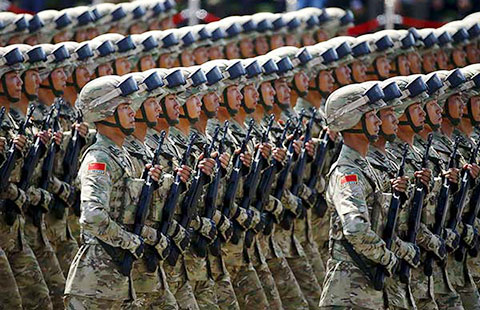Iris Chang: A light in the darkness
By Zhao Xu (China Daily) Updated: 2015-12-14 08:06The author of The Rape of Nanking is best remembered for her harrowing account of the 1937 massacre that left 300,000 people dead and thousands more maimed for life. Zhao Xu reports.
"Loneliness is a silent chirp of a cricket across a lake
Where the leaves on the trees rustle at sunset.
It smells like a violet patch.
It sounds like wind blowing through the tall prairie grass ..."
|
Clockwise from top: Iris Chang (second from right) interviewed Nanjing Massacre survivor Xia Shuqin (second from left) in 1995. Chang autographs a copy of The Rape ofNanking for a reader at the United States Holocaust Memorial Museum in Washington in 1998. Ying-Ying Chang (center) and Shau-Jin Chang (left) attend the first national memorial service for the victims of the Nanjing Massacre, on Dec 13 last year. Photos Provided to China Daily and by Liu Yu / Xinhua |
Iris Chang wrote those lines in 1978, when she was 10, and 19 years before her harrowing book, The Rape of Nanking, brought her worldwide acclaim.
In 1995, at age 27, Chang flew from California to Nanjing in East China's Jiangsu province. There, under a crimson setting sun, she waded through the tall grass in an eastern suburb to reach a nondescript memorial stone dedicated to the victims of a massacre committed by the Japanese army in 1937.
That scene, and Chang's life-changing three-week visit, is described in moving detail in The Woman Who Could Not Forget, written by her mother, Ying-Ying Chang, and published in 2011, seven years after Iris Chang committed suicide. In December last year, Ying-Ying Chang visited Nanjing and, for the first time, toured the places where her daughter searched for a long-buried history.
The 75-year-old was accompanied by Yang Xiaming, who has spent years researching the six-week slaughter now known as the Nanjing Massacre. Yang accompanied Iris Chang 20 years earlier, as she gazed at the memorial stone.
"To see this young, vivacious woman, someone I had met just days before, go into a contemplative state of sadness was almost heartbreaking," said Yang, who acted as interpreter for the Chinese-American author as she spoke with survivors of the massacre.
"Their tragedy was only a tiny part of the one that started on Dec 13, 1937, when Japanese troops killed an estimated 300,000 civilians and unarmed soldiers, and raped countless others. But listening to the stories of people who crawled from under the heaps of bodies was enough to shake anyone to the core."
- China to sink billions into new airports
- More high-speed services to be added
- Lunar mission moves a step closer
- Southwest China city tries to help make smog-free meat
- Watchdog issues rare comment on execs' porn prosecution
- Tourism revenue in Tibet's Lhasa to double by 2020
- China overfulfills affordable housing target
- Bumper crops fill reserves
- Awards honor scientists' contributions
- Chinese police seize 470 suspects in transnational telecom fraud








